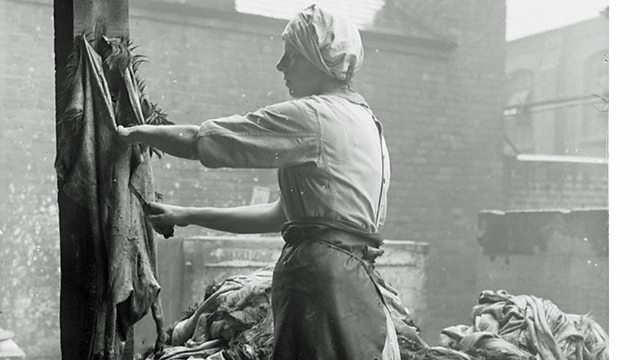Turneys Quay, Nottingham: Supplying a Growing Wartime Need for Leather
Demand for leather increased dramatically during WW1, boosting the city’s industry
During World War One, Turney Brothers in Nottingham was one of the biggest tanneries in the UK. The firm increased production during the war to meet a growing demand for leather.
John and Edward Turney built a tannery next to the River Trent and canal in 1861. The firm specialised in sheep and goatskins and quickly became one of the most important tanneries, exporting leather to the United States.
During the WW1, tanneries were vital. The war effort needed huge amounts of leather and the UK tanneries were working to capacity.
Turney Brothers in Nottingham made leather for jackets, belts, gloves and horse ‘furniture’ (such as straps and bags).
The work was difficult and smelly. A sharp knife was used to remove hair and flesh from animal hides. The leather was then dried and finished on the upper floors of the Turneys building.
Until the war, the de-greasing of leather was almost exclusively a male occupation. After 1914, photographs show women doing the heaviest jobs, which indicate women were working throughout the tannery during the conflict.
Turney Brothers leatherworks was a landmark on entering or leaving Nottingham for over 100 years. The building retains its original façade and has been converted into accommodation.
Location: Turneys Court, Nottingham NG2 3BW
Image shows a woman working at the tannery, courtesy of Imperial War Museums
Presented by Sarah Julian
Duration:
This clip is from
Featured in...
![]()
����ý Radio Nottingham—World War One At Home
Places around Nottingham that tell a story of World War One
![]()
Home Front Life—World War One At Home
Everyday life in the towns, villages and countryside
More clips from World War One At Home
-
![]()
The loss of HMY Iolaire
Duration: 18:52
-
![]()
Scotland, Slamannan and the Argylls
Duration: 07:55
-
![]()
Scotland Museum of Edinburgh mourning dress
Duration: 06:17
-
![]()
Scotland Montrose 'GI Brides'
Duration: 06:41







